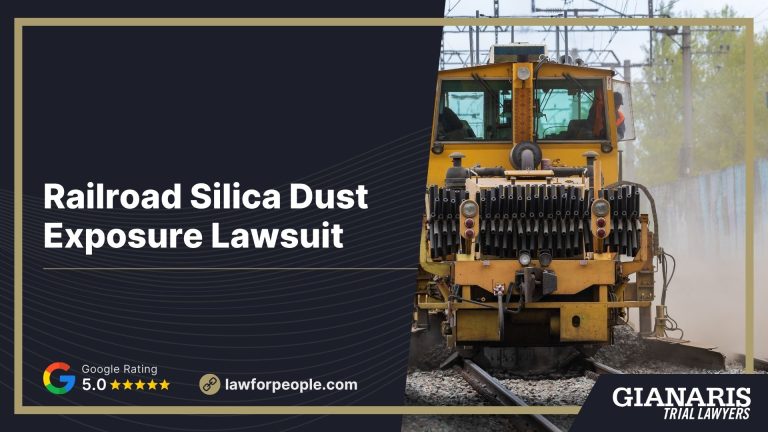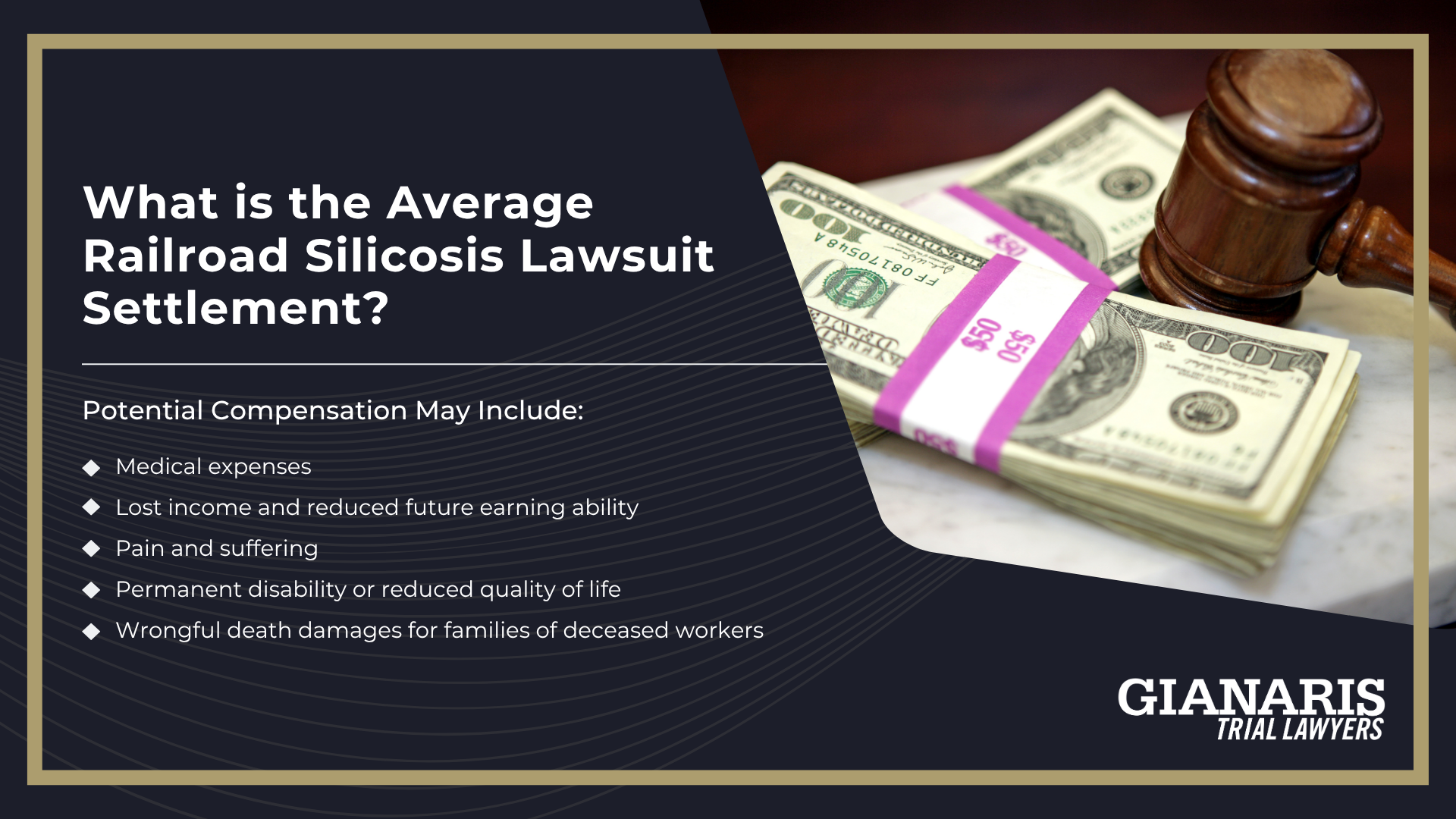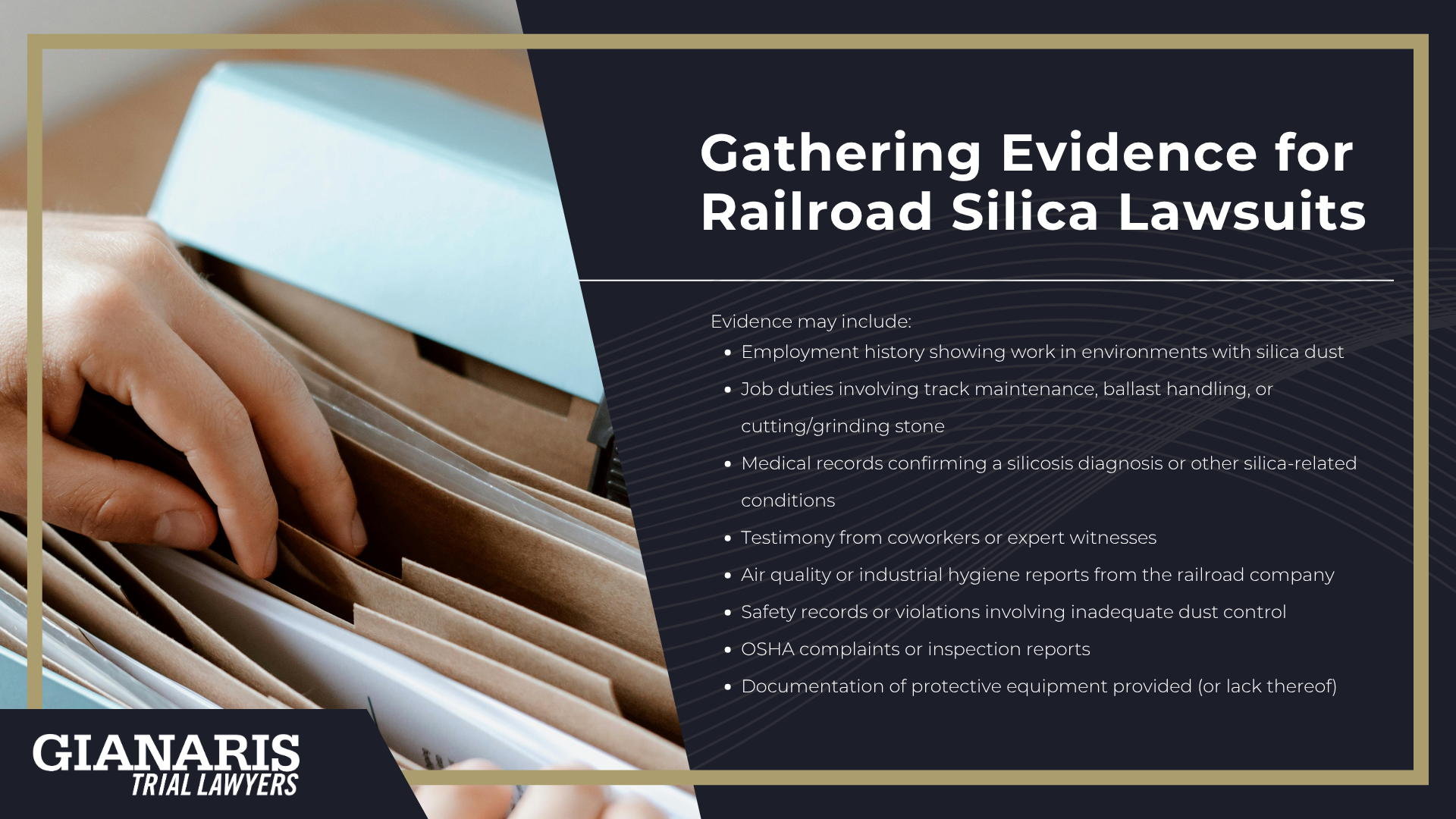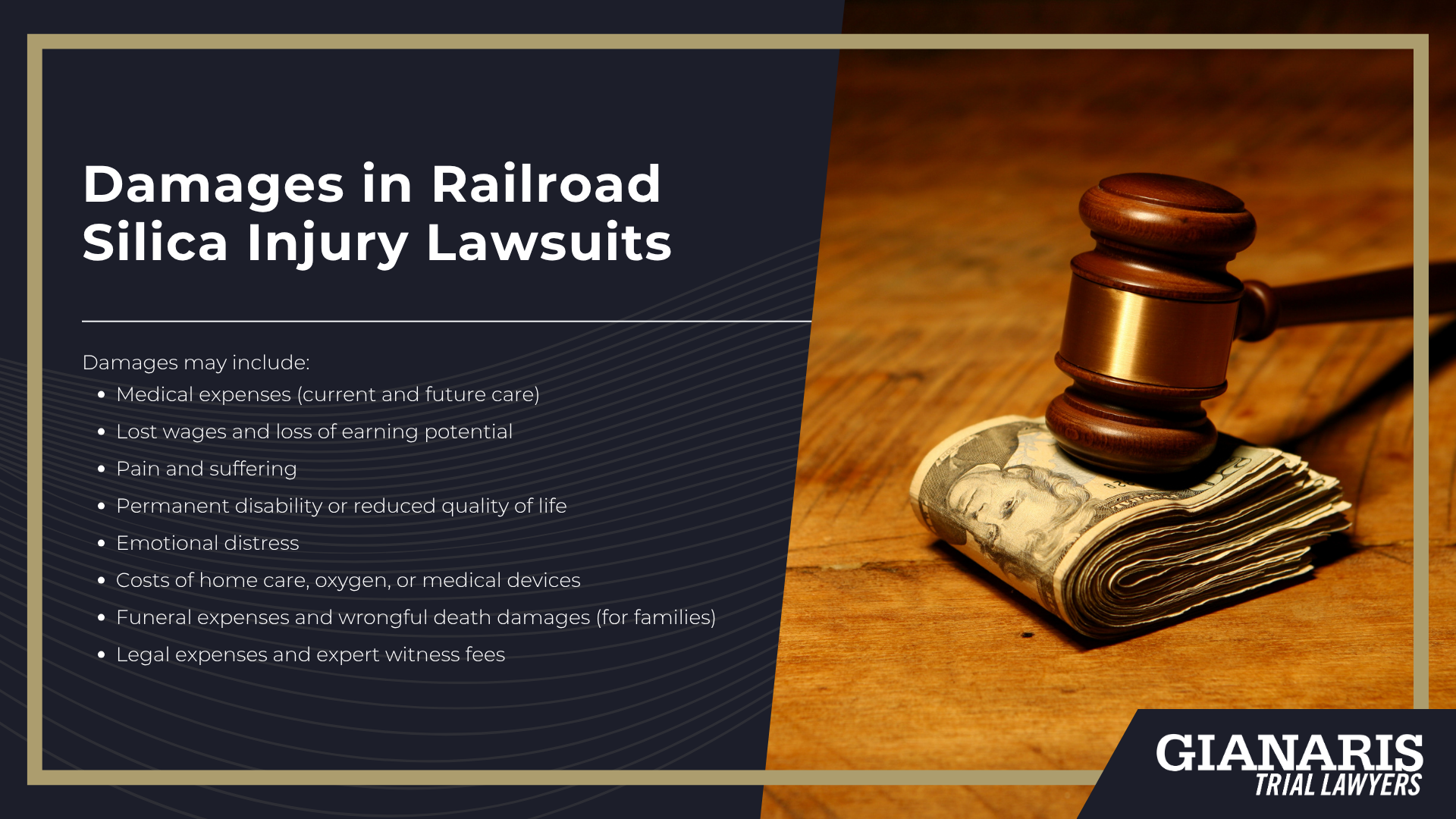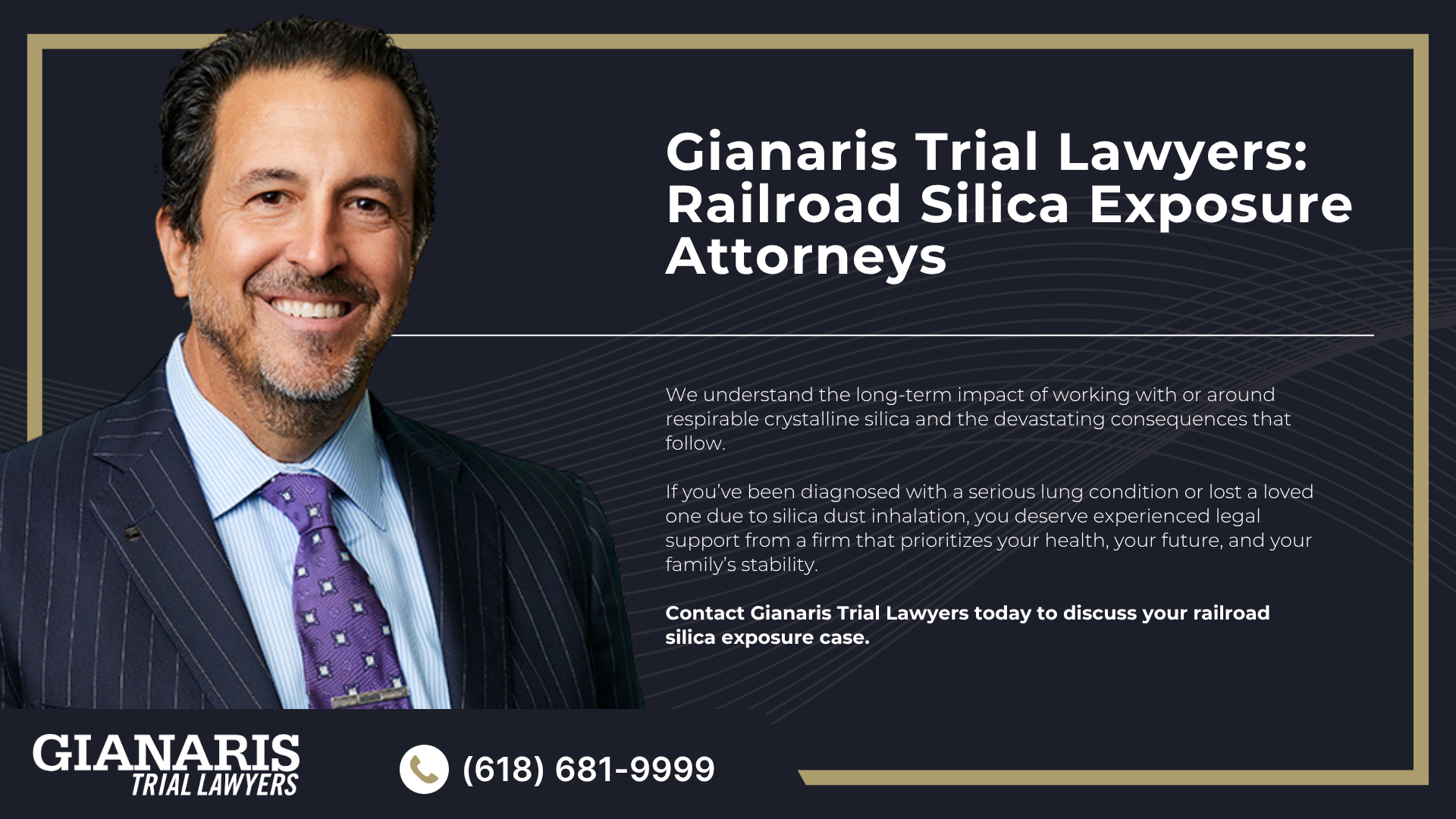Silica dust exposure on the railroad most commonly occurs during maintenance-of-way operations, particularly those involving track ballast, which is often composed of crushed stone containing silica.
As trains pass over the tracks or maintenance crews work on them, the crushed stone can generate airborne silica dust particles that are easily inhaled.
Silica sand is also frequently used in locomotive braking systems, where it is applied to the rails for added traction, creating another point of exposure for workers who operate, refill, or maintain this equipment.
When proper ventilation, masks, and dust suppression systems are not used, railroad workers can unknowingly inhale high levels of this toxic substance.
The health risks of long-term silica dust inhalation include silicosis, lung cancer, and other irreversible lung damage, which may lead to permanent disability or even premature death.
Railroad companies are legally obligated to protect workers from known hazards, including exposure to silica dust.
However, many failed to implement appropriate safety protocols or provide adequate personal protective equipment (PPE), putting countless employees at risk.
These failures can form the basis of silica-related wrongful death claims or personal injury lawsuits.
Railroad workers in various departments (including track maintenance, locomotive operations, and shop work) may have encountered hazardous levels of airborne silica without any warning.
Workers suffering from silica-related diseases often report symptoms such as shortness of breath, chronic coughing, chest pain, and fatigue.
Those facing permanent lung damage or terminal illness may be entitled to significant compensation for medical care, lost income, pain and suffering, and long-term disability.
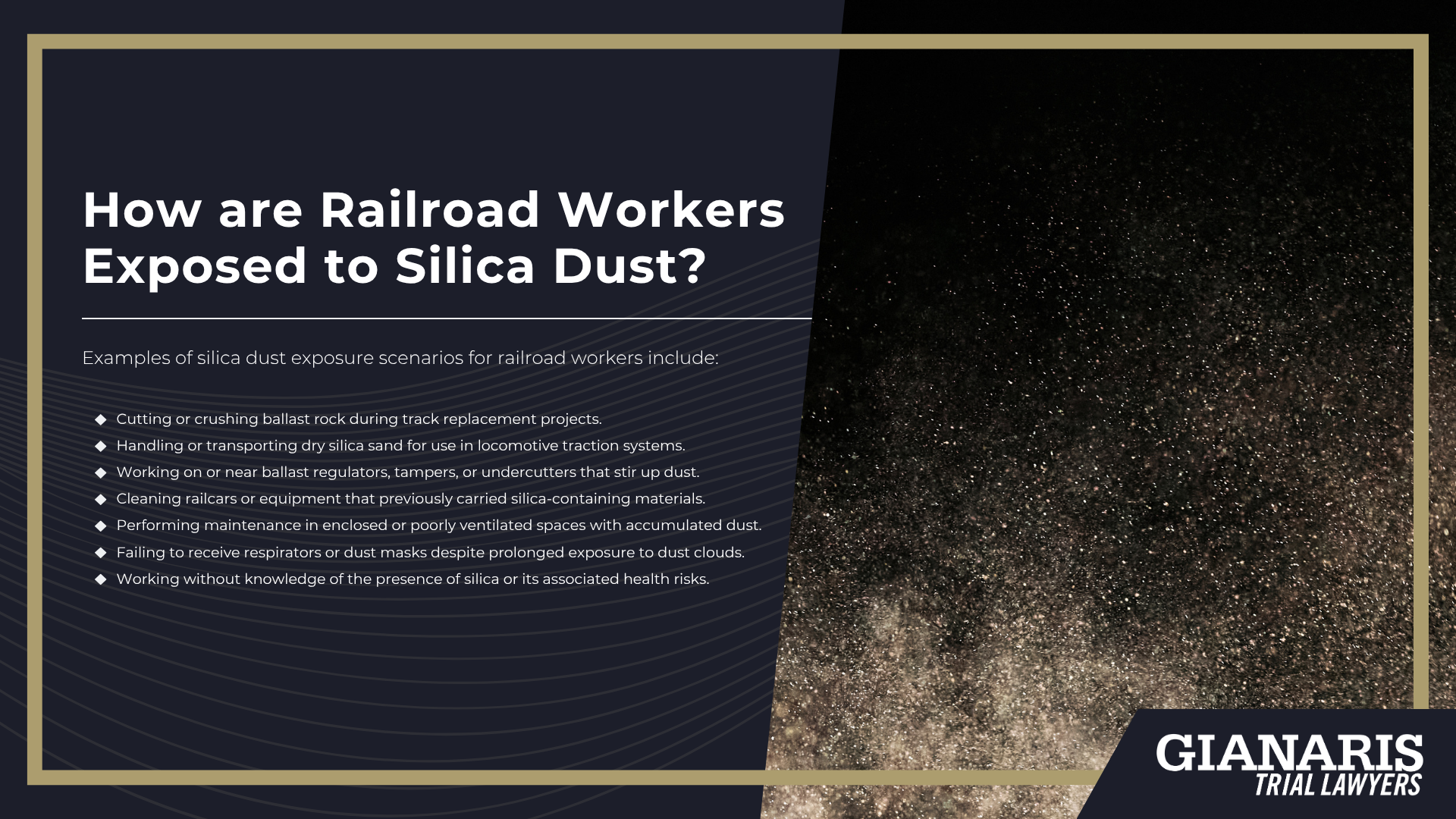
Examples of silica dust exposure scenarios for railroad workers include:
- Cutting or crushing ballast rock during track replacement projects.
- Handling or transporting dry silica sand for use in locomotive traction systems.
- Working on or near ballast regulators, tampers, or undercutters that stir up dust.
- Cleaning railcars or equipment that previously carried silica-containing materials.
- Performing maintenance in enclosed or poorly ventilated spaces with accumulated dust.
- Failing to receive respirators or dust masks despite prolonged exposure to dust clouds.
- Working without knowledge of the presence of silica or its associated health risks.
Common Health Problems Linked to Silica Dust Exposure
Occupational exposure to small silica particles can lead to a wide range of serious and often irreversible medical conditions.
When inhaled, respirable silica embeds deep in the lungs, causing inflammation and permanent scar tissue that severely reduces lung capacity.
Over time, many workers develop silicosis: an incurable lung disease that can appear in chronic, accelerated, or acute forms depending on the level and duration of exposure.
Chronic bronchitis and other forms of lung disease caused by silica dust are also common, especially among workers exposed for decades.
In severe silicosis and advanced silicosis cases, silicosis patients may require oxygen therapy or even lung transplants.
The buildup of scar tissue can cause respiratory failure and increase the risk of fatal lung disease.
Silica dust exposure has also been linked to kidney disease, autoimmune disorders, and emotional distress caused by the inability to work or breathe without assistance.
Individuals who work with artificial stone or in high-dust environments face an increased risk of silicosis diagnosis, often after symptoms have already become debilitating.
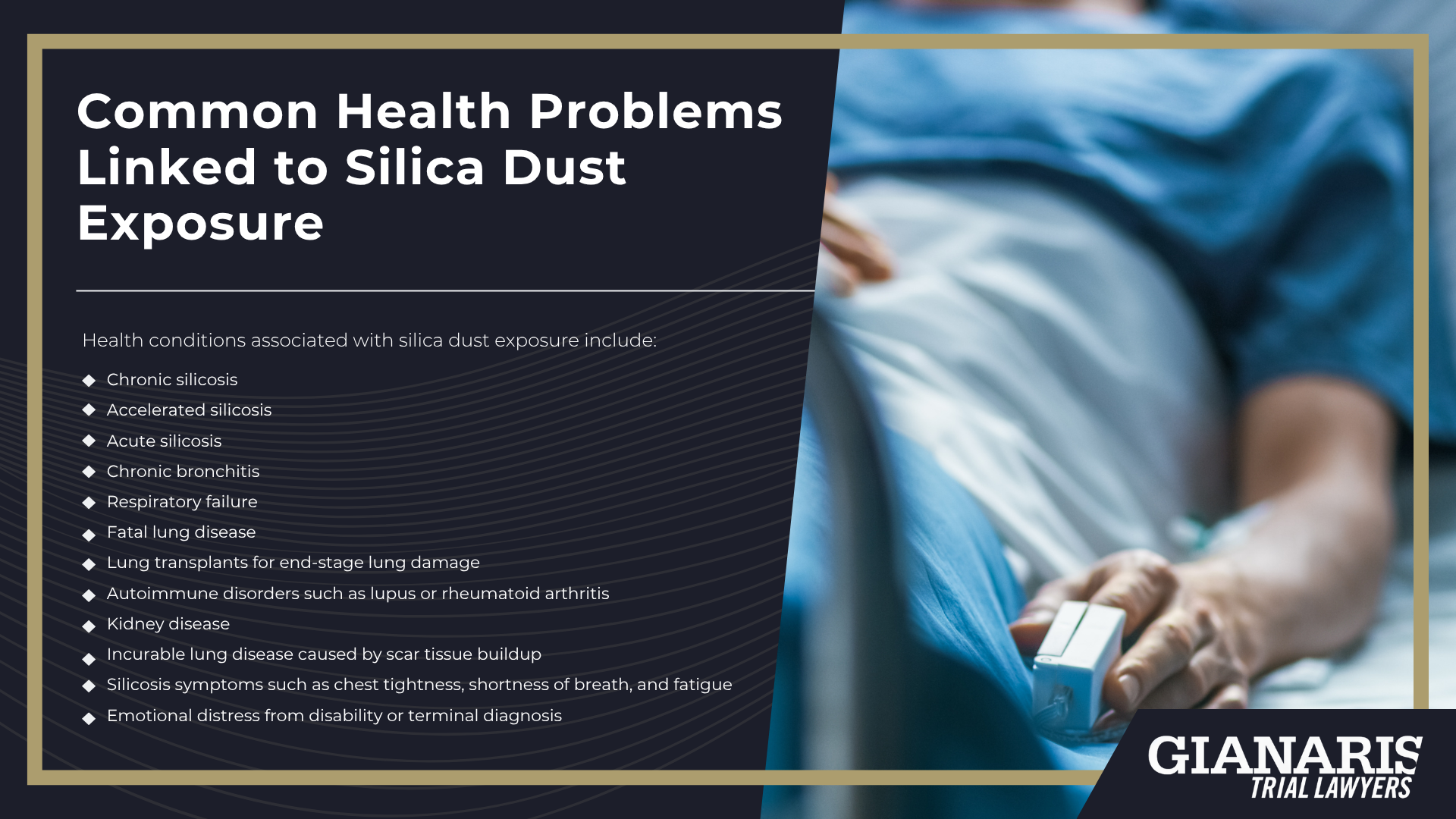
Health conditions associated with silica dust exposure include:
- Chronic silicosis
- Accelerated silicosis
- Acute silicosis
- Chronic bronchitis
- Respiratory failure
- Fatal lung disease
- Lung transplants for end-stage lung damage
- Autoimmune disorders such as lupus or rheumatoid arthritis
- Kidney disease
- Incurable lung disease caused by scar tissue buildup
- Silicosis symptoms such as chest tightness, shortness of breath, and fatigue
- Emotional distress from disability or terminal diagnosis

